 |
 |
|||
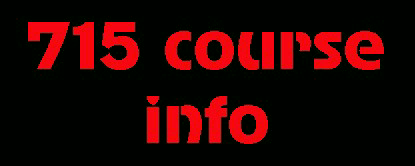 |
||||
 |
||||
 |
 |
 |
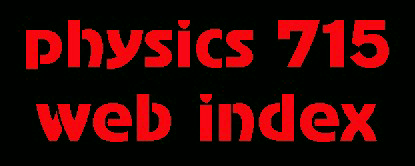 |
|
Send comments or questions to: ldurand@hep.wisc.edu
 |
 |
|||
 |
||||
 |
||||
 |
 |
 |
 |
|
Send comments or questions to: ldurand@hep.wisc.edu
SYLLABUS
PHYSICS 715, STATISTICAL MECHANICS
SPRING, 2006
The course is divided into three units, UNIT 1, UNIT 2, and UNIT 3, with different themes and emphasis. UNIT 1 is concerned with the background of statistical mechanics and applications mainly in the classical area. It is intended to build up familiarity with the methods of statistical mechanics through applications in familiar settings. The unit concludes with the development of the cluster-expansion method for treating interactions in gases. UNIT 2 begins with the development of the method of correlation functions and mean-field methods for dense systems, then goes on to the development of quantum statistical mechanics, with applications equilibrium and reaction problems. UNIT 3 is concerned mainly with the quantum gases and degenerate Fermi-Dirac and Bose-Einstein systems, phase transitions, and critical phenomena.
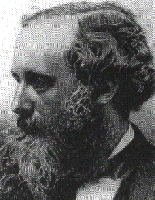 |
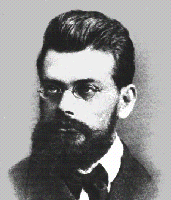 |
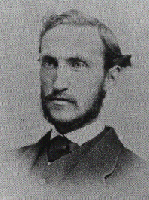 |
||
| James Clerk Maxwell | Ludwig Boltzmann | Josiah Willard Gibbs |
| Week | Lec. | Date | Subjects |
|---|---|---|---|
| 1 | 1 | Jan. 18 | motivations, statistical ideas; counting problems, statistical weights, probability distributions |
| 2 | 20 | Boltzmann entropy from counting, 1/T; examples: 2-level "atom", rubber, temperature dependence of tension, rubber thermometer | |
| 2 | 3 | Jan. 23 | maximum S vs. minimum E, dominance of entropy; phase space, canonical invariance, Liouville's theorem and conservation of probability, continuum distributions |
| 4 | 25 | equilibrium, microcanonical distribution; restricted phase space, Gibbs' counting | |
| Hw. 1 | 5 | 27 | ideal gas; S, thermodynamic relations; statistical weights for combined systems |
| 3 | 6 | Jan. 30 | equilibrium and the most probable distribution, properties of S_AB, probability distribution dw_A for a subsystem, Gibbs' canonical distribution |
| 7 | Feb. 1 | the canonical distribution and partition function Z, relation to the Helmholtz free energy F; Gibbs' approach, Gibbs' entropy | |
| Hw. 2 | 8 | 3 | multiparticle Maxwell-Boltzmann distributions, dynamical averages; thermodynamics from F or Z |
| 4 | 9 | Feb. 6 | statistical calculations using derivatives of Z, examples, fluctuations, oscillators |
| 10 | 8 | rotations, transformation to noncanonical variables; equipartition of energy for quadratic degrees of freedom | |
| Hw. 3 | 11 | 10 | virial theorem and the equation of state of an interacting gas; statistical mechanics for translating and rotating systems |
| 5 | 12 | Feb. 13 | diamagnetism in classical systems, Bohr-van Leeuven theorem; grand canonical distribution, Z, the thermodynamic potential and the chemical potential |
| 13 | 15 | general relations using Z, examples; interacting systems | |
| Hw. 4 | 14 | 17 | perturbation theory in the grand ensemble, changes in the free energy, energy, and entropy; correlations; restrictions on the validity of perturbation theory |
| END OF UNIT 1 | |||
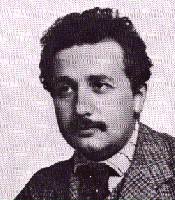 |
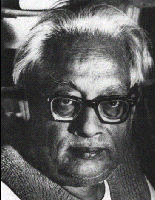 |
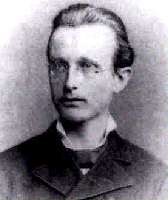 |
||
| Albert Einstein, 1905 | S.K. Bose | Max Planck |
| Week | Lec. | Date | Subjects |
|---|---|---|---|
| 6 | 15 | Feb. 20 | van der Waals gas, virial expansion for the equation of state; classical cluster expansion for Z, form of Z for binary clusters |
| 16 | 22 | HOUR EXAM IN CLASS ON THE MATERIAL IN UNIT 1 | |
| 17 | 24 | Z in the binary cluster expansion, generalizations; determination of N, z, P; relation of the second virial coefficient to binary clusters, qualitative behavior of a_2 for typical interatomic potentials | |
| 18 | Feb. 27 | long range interactions, failure of the cluster expansion; mean field ideas; general thermodynamic relations and the conditions for equilibrium; scaling arguments, Gibbs-Duhem equation | |
| 19 | Mar. 1 | equilibrium in an external field; mean field ideas, Debye-Hückel theory | |
| Hw. 5 | 20 | 3 | consistency of Debye-Hückel theory; correlation functions, BBGKY hierarchy |
| 8 | 21 | Mar. 6 | BBGKY; quantum statistics, the density matrix, traces, examples |
| 22 | 8 | properties of the density matrix, Gibbs distribution, energy representation | |
| Hw. 6 | 23 | 10 | Fermi, Bose systems: restrictions and counting; quantum oscillator, classical limit |
| SPRING RECESS, MARCH 11-19 | |||
| 9 | 24 | Mar. 20 | spins systems, paramagnetism; representation of traces, expansion in h, classical limit, corrections for statistics |
| 25 | 22 | effective quantum potential; diatomic molecules, internal excitations | |
| Hw. 7 | 26 | 24 | vibrational and rotational partition functions; Euler-Maclaurin summation; homonuclear diatomic molecules, molecular symmetries; Bose nuclei |
| 10 | 27 | Mar. 27 | Fermi nuclei; direct and exchange sums, specific heats, rotational energies, entropy; equilibrium in homogeneous systems, chemical potential |
| 28 | 29 | phase equilibrium, Langmuir adsorption | |
| Hw. 8 | 29 | 31 | multicomponent systems, "chemical" reactions, reaction constants, negative hydrogen ion |
| END OF UNIT 2 | |||
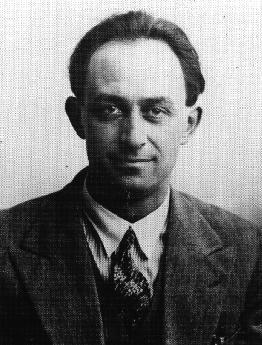 |
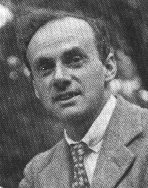 |
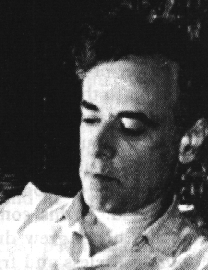 |
||
| Enrico Fermi | Paul Dirac | Lev D. Landau |
| Week | Lec. | Date | Subjects |
|---|---|---|---|
| 11 | 30 | April 3 | nonconserved particles, Schottky defects; Fermi and Bose distributions, ideal quantum gases |
| 31 | 5 | Z, number and energy distributions, Fermi and Bose pressures, relation between P and E | |
| Hw. 9 | 32 | 7 | adiabatic relations, classical limit, chemical potentials; degenerate Fermi gas |
| 12 | 33 | April 10 | degenerate gas: p_F, E_F, P_F, qualitative estimates; calculation of degenerate Fermi-Dirac averages |
| 34 | 12 | HOUR EXAM IN CLASS ON THE MATERIAL IN UNIT 2 | |
| 35 | 14 | chemical potential of the nearly degenerate Fermi gas, specific heat, Landau diamagnetism | |
| 13 | 36 | April 17 | relativistic Fermi and Bose gases, E, P, adiabatic relations; blackbody radiation; mixed Fermi and Bose systems, antiparticles, equilibrium |
| 37 | 19 | degenerate Fermi systems at high density, white dwarf stars, Chandrasekhar limit; Fermi statistical model | |
| Hw. 10 | 38 | 21 | excitations in solids, phonons, the Debye model for solids |
| 14 | 39 | April 24 | the degenerate Bose gas, Bose-Einstein condensation |
| 40 | 26 | Bose-Einstein phase transition, behavior near T_c | |
| Hw. 11 | 41 | 28 | general phase transitions, order and symmetry, order parameters |
| 15 | 42 | May 1 | scaling, correlation lengths, critical exponents |
| 43 | 3 | mean field theory, Landau-Ginzburg approach | |
| Hw. 12 | 44 | 5 | Ising model, Bragg-Williams approximation. Last class, all work due. |
| END OF UNIT 3 | |||
| Final | May 8 | FINAL EXAM MONDAY, MAY 8, 12:25 pm | |